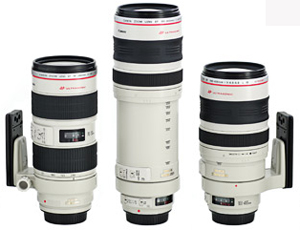Lens
The lens is an important part of travel photography, even more than the camera (body) itself. Lenses can be categorized into different classes based on, among others:
Focal length (focal length)The shorter the focus of a lens the wider view obtained, or also called wide angle lens / wide angle lens. While
the focal length of the lens the more narrow point of view but the
higher magnification of the recorded object, or often referred to as the
zoom lens. Judging from the length of the focus and usefulness, we can categorize the lens into several classes, among others:
Wide and ultra wide angle. This lens has a focal 35 mm or shorter. The
wider the angle of view lens yan recorded more objects, the lens type
is perfect for photographing landscapes (landscape), buildings,
activities that involve a lot of people like the traditional ceremonies,
dances, or a great family photo. Besides a wide angle lens is very useful when you are close to the object you are going to photograph. These lenses also provide 3-dimensional effect on the resulting image.
Standard lens. Has the focus of 50 or 55 mm, this lens is usually also an innate lens / kit lens when we buy a new camera. Lenses of this type suitable for everyday needs in a photograph.
Telephoto lenses. The focal length of the lens (focal length) lens range 85-200 mm. Long
enough for you to photograph objects that are not too close to you, for
example, a candid photograph of children who were playing without
disturbing their game, or taking candid focusing on a dancer among the
other dancers.
Super Telephoto lens. With
a focal length of 300-800 mm, extreme lens is suitable for taking
pictures of wildlife such as birds were in the nest, or maybe even
photographing wild animals without having to position ourselves in
danger with him. Lenses of this type are often used in the world of sports. The price is expensive, and its length and weight make this lens is usually only used by serious photography enthusiasts.

Fix Lens and Zoom Lens.Fix focus lens has a fixed value, or simply the lens can not be used to zoom the object, which means you have to walk toward or away to zoom in / out objects. The advantages of this lens is smaller than the zoom lens, and the results are sharper. Fix lens has a wide aperture so as to produce the effect of blur / bokeh better. Zoom lens has a focal range of purposes, such as focusing lens 18-135 mm. Excess fleksibelitasnya zoom lens is, the one we can get the focus lens for wide angle and zoom lenses as well. The disadvantage is the large size and quality of the sharpness of the results obtained are still below the fixed lens. Tips on how to make the background of the photo to blur, click here ..
Fast Lens.The term given to the lens fast lens with a large aperture capability (aperture) is characterized by a small value of f (eg f/2.8). With a large aperture that lets light into the camera becomes large, the effect is the ability to use a high shutter speed (so called fast lens) in conditions that are less light / dark to avoid the objects to be blurry (especially the moving object, say dancers who was dancing at night with a torch light). Therefore, this lens is best used in conditions that are less lighting without having to lower the shutter speed and raising the ISO, so that the results would have been better than usual lenses. In addition, the effect of a large aperture also creates a narrow depth of field, so you can make the effects of blur / bokeh in the background of photos with more ease and better.
Fix & Variable ApertureSome lenses are also made with a fixed aperture, with aperture diaphragm that can not be changed. Lenses like this are usually worth relatively expensive compared to a lens with a variable aperture (aperture varying focal length follow)
Buying Tips Lens.So how do we choose the lens? The first course to ask yourself what your purposes. Is it only for the purposes meotret like regular or special interest such as photographing landscapes (wide angle better), or wildlife (requires a telephoto or super telephoto).Some other tips that you can consider include:1. A faster lens is better than a slower lens. Choose a lens with a minimum value of f.2. Lens with fixed aperture (f value remains) is better, although these lenses are usually expensive.3. Fix lens (a lens with a fixed focus) were sharper, but the zoom lens more flexible in taking mood quickly from one place without you having to move back and forth so it is likely you will lose the desired moment.4. Consider also the quality of the lens material if you have more funds. Some upscale lenses made with good materials and even resistant to weather changes.



0 komentar:
Posting Komentar